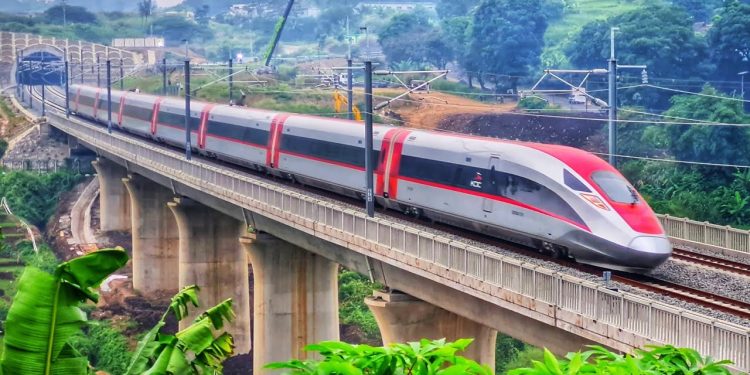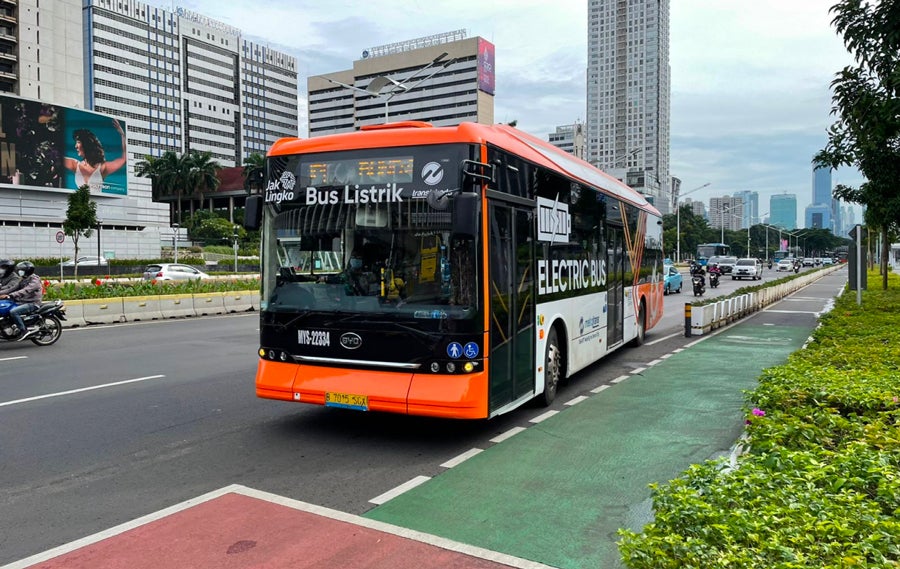
A groundbreaking development in modern transit is set to reshape the connectivity between two vibrant urban centers. This remarkable initiative showcases advancements in technology and infrastructure aimed at elevating travel experiences and enhancing economic collaboration. With its remarkable capabilities, the new transportation system promises to bring significant benefits to both residents and visitors alike.
Through a combination of cutting-edge engineering and efficient design, this new venture is designed to dramatically reduce travel time, making journeys more convenient and accessible. Enhanced speed and comfort are just part of what this progressive solution offers. The integration of this service into the existing transportation network stands to unlock new opportunities and foster stronger relationships between significant regions.
As this transformative project takes shape, anticipation grows around its potential impact on daily commutes, tourism, and trade. The vision behind this initiative reflects a commitment to modernizing transportation while prioritizing sustainability and passenger satisfaction. Stakeholders are eager to witness the positive changes that this innovative service could bring to the landscape of regional transit.
Japan’s High-Speed Vision for Indonesia
The ambitious pursuit of advanced transit systems promises to transform connectivity and enhance economic growth in emerging markets. The initiative focuses on implementing cutting-edge transportation technology, aiming to elevate travel experiences while reducing transit times across vast regions.
This strategic endeavor encompasses various key components:
-
Enhanced Connectivity: Streamlining travel between major urban centers facilitates business opportunities and tourism.
-
Sustainability: Prioritizing eco-friendly practices in construction and operations to minimize environmental impact.
-
Economic Development: Creating job opportunities during the construction phase and boosting local economies through improved access.
-
Technological Innovation: Introducing state-of-the-art systems that ensure safety, reliability, and efficiency in transportation.
The collaborative efforts emphasize not only infrastructure development but also cultural exchange and mutual growth, showcasing a commitment to fostering strong international partnerships.
Ideally, this high-speed initiative will serve as a catalyst for further advancements in the regional transportation network, ultimately contributing to enhanced mobility and a more interconnected future.
Key Features of the New Shinkansen
The latest high-speed transportation system introduces a range of innovative characteristics aimed at enhancing passenger experience and operational efficiency. These advancements represent a significant leap forward in the field of rail travel, ensuring comfort and sustainability for users.
Speed and Efficiency: The system is designed to achieve remarkable speeds, drastically reducing travel time between major urban centers. This remarkable efficiency will facilitate quicker commutes and boost connectivity.
Comfort and Design: Each train boasts an ergonomic interior, featuring spacious seating and well-designed amenities that cater to the needs of modern travelers. The aesthetic appeal of the trains combines functionality with luxury, ensuring a pleasant journey.
Advanced Safety Features: Cutting-edge technology has been integrated to guarantee passenger safety. This includes sophisticated braking systems and real-time monitoring, which minimize risks during travel and enhance overall security.
Environmental Considerations: Emphasizing sustainability, the system is engineered to minimize carbon emissions and energy consumption. The commitment to eco-friendly practices aligns with global efforts towards a greener future.
Integrated Technology: Passengers can enjoy seamless connectivity through wireless internet access and advanced entertainment options. These tech features aim to make the journey more enjoyable and efficient.
The introduction of this new high-speed transport marks a transformative moment in regional connectivity, promising to benefit both commuters and the economy as a whole.
Economic Benefits of the Jakarta-Bandung Link
The establishment of a fast transportation corridor between two major urban centers is set to bring transformative effects to the regional economy. Improved connectivity can spur business growth, enhance trade opportunities, and promote tourism, leading to a more robust economic landscape.
Increased Efficiency: The new transit option will significantly reduce travel time, allowing commuters to traverse the distance much quicker than before. This time-saving aspect can increase productivity, as it enables employees and goods to reach their destinations efficiently.
Job Creation: The development project will generate a multitude of employment opportunities, both during the construction phase and in the ongoing operation of the service. This influx of jobs can invigorate local economies and provide valuable skills to the workforce.
Attracting Investment: As accessibility improves, the region is likely to become a magnet for domestic and foreign investors looking for strategic locations for their businesses. This influx of capital can lead to further development and economic diversification.
Tourism Growth: A modern transport network can facilitate tourism by making it easier for travelers to visit attractions in both urban areas. This increased visitor traffic can boost hospitality services, creating a ripple effect through local businesses and services.
Environmental Benefits: By providing an alternative to road travel, the new transport option can reduce traffic congestion and lower carbon emissions. This shift towards more sustainable transport can improve air quality and the overall quality of life for residents.
In summary, the new transit connection promises to drive significant economic improvements, enhancing quality of life and fostering growth in various sectors.
Technological Innovations in Rail Transport
Recent advancements in transportation technology have fundamentally transformed the way people and goods are moved across regions. By incorporating cutting-edge solutions, the rail industry is enhancing efficiency, safety, and overall passenger experience. These innovations are paving the way for a more sustainable and interconnected future.
Key Developments in Rail Technology
-
Maglev Systems: Utilizing magnetic levitation, trains can achieve remarkable speeds while minimizing friction, leading to faster travel times.
-
Autonomous Operations: With the integration of artificial intelligence and machine learning, trains are increasingly capable of self-driving, ensuring optimal safety and scheduling.
-
Energy Efficiency: New propulsion systems and energy recovery technologies are being developed to reduce consumption and enhance performance.
-
Smart Infrastructure: Advanced monitoring systems and sensors are being deployed to optimize maintenance and improve reliability.
Impact on Passenger Experience
-
Enhanced Comfort: Innovations in seating, noise reduction, and climate control create a more pleasant journey for travelers.
-
Seamless Connectivity: Integrated ticketing systems and real-time information apps improve ease of travel and accessibility for users.
-
Safety Enhancements: Advanced signaling and communication technologies contribute to significant reductions in accidents and delays.
The ongoing evolution of rail transport technology promises not only to improve logistical efficiency but also to foster stronger economic ties between regions, reshaping how communities connect and grow.
Environmental Impact of the New Railway
The introduction of the new transportation corridor promises not only to enhance mobility but also to generate significant effects on the surrounding ecosystem. As communities seek efficient and rapid transit solutions, it is crucial to assess how these developments interact with the natural environment.
One of the most substantial benefits of the upgraded system is the potential reduction in greenhouse gas emissions. By encouraging a shift from road vehicles to a more sustainable mode of transport, the initiative aims to decrease reliance on fossil fuels, thereby contributing to cleaner air quality in urban and regional areas.
Moreover, careful planning and construction methods can minimize habitat disruption. Implementation of eco-friendly technologies during the building phase will significantly lessen the negative impact on local wildlife, ensuring that biodiversity is preserved as much as possible. Strategic routing and elevated tracks can provide safe passage for animals, keeping their habitats intact.
Additionally, sound barriers and green landscaping initiatives are expected to mitigate noise pollution, fostering a more tranquil environment for both residents and wildlife alike. Engaging with communities to incorporate green spaces alongside the transport line can further enhance the ecological benefits.
Ultimately, while the overall infrastructure advancement is recognized, it is essential to continuously monitor and address potential environmental challenges that could arise during and after implementation. Balancing development with preservation will be key to achieving long-term sustainability and ensuring that progress aligns with environmental stewardship.
Future Plans for Indonesia’s Rail Network
In the coming years, Indonesia is poised to transform its transportation infrastructure, establishing a more interconnected and efficient network that meets the demands of a rapidly growing population. This initiative aims to enhance travel convenience and bolster economic development across various regions.
Key projects are underway that will expand coverage and improve the speed of services, offering enhanced mobility and accessibility to remote areas. By investing in modern technology and innovative solutions, the nation anticipates attracting more travelers and businesses alike.
The integration of various modes of transport is also a priority, ensuring seamless transitions between systems. Furthermore, sustainability considerations are at the forefront, with plans to incorporate eco-friendly practices that reduce environmental impact while maintaining efficiency.
As these ambitious developments unfold, the vision for Indonesia’s transport landscape is clearer than ever, promising a future where connectivity will significantly enhance the quality of life for millions of citizens.
Q&A: Japan sweatens Jakarta bandung Shinkansen railway offer
What are the key features of the new Shinkansen railway connecting Jakarta and Bandung?
The newly unveiled Shinkansen railway offers several key features aimed at enhancing travel experience between Jakarta and Bandung. It will boast advanced high-speed technology, allowing trains to reach speeds of up to 300 km/h (approximately 186 mph). Additionally, the railway will include state-of-the-art safety systems, comfortable seating, and amenities like onboard Wi-Fi and food services. The project also emphasizes environmental sustainability, with energy-efficient operations and reduced carbon emissions, contributing positively to the urban transport ecosystem.
How will the Shinkansen railway impact travel time between Jakarta and Bandung?
With the introduction of the Shinkansen railway, the travel time between Jakarta and Bandung is expected to be significantly reduced. Currently, the journey can take anywhere from 2 to 4 hours depending on traffic conditions. The Shinkansen is projected to cut this travel time to approximately 40 minutes, making it a highly efficient option for commuters and travelers alike. This reduction in travel time will facilitate better connectivity between the two cities and promote economic growth in the region.
When is the expected launch date for the Shinkansen railway service?
While specific timing can be subject to changes based on construction and operational factors, officials have indicated that the Shinkansen railway service is anticipated to launch in late 2025. The timeline includes completing the necessary infrastructure, conducting rigorous safety checks, and ensuring all systems are fully operational. Continuous updates will be provided to the public as the project progresses toward completion.
What are the economic benefits of the Shinkansen railway for Indonesia?
The Shinkansen railway is poised to deliver numerous economic benefits to Indonesia. Firstly, it is expected to stimulate local businesses by increasing tourism and encouraging investment in surrounding areas. Faster transportation will facilitate the movement of goods and people, enhancing trade and commercial activities between Jakarta and Bandung. Additionally, the project will create job opportunities during construction and operation phases, benefiting the local workforce. Long-term, improved infrastructure can lead to increased property values and enhanced urban development in both cities.
How does the Shinkansen technology compare to other railway systems globally?
Shinkansen technology is renowned for its speed, safety, and punctuality. It employs advanced engineering innovations and rigorous maintenance protocols that ensure minimal delays and high operational efficiency. Compared to other high-speed rail systems globally, such as France’s TGV or China’s CRH, Shinkansen has a long-standing reputation for safety, with a record of zero fatalities due to accidents since its inception. Furthermore, Shinkansen trains are designed to be quieter and more environmentally friendly, making them among the best options for high-speed rail travel worldwide. This technology will raise standards for railway services in Indonesia and set a benchmark for future projects in the region.
How does the Jakarta-Bandung high-speed railway project impact Indonesia’s infrastructure development?
The Jakarta-Bandung high-speed railway project is a significant step forward in Indonesia’s infrastructure development. This railway line, connecting the capital Jakarta to the city of Bandung, is the first high-speed railway project in the archipelago. It envisions a high-speed train service that will dramatically reduce travel time between these two major cities to just 36 minutes. The project is a key component of Indonesia’s broader plan to modernize its transportation network and stimulate economic growth.
Why is Japan sweetening its bid for the Jakarta-Bandung high-speed railway project?
Japan is sweetening its bid for the Jakarta-Bandung high-speed railway project to outpace China in this highly competitive race. Japan has offered an annual interest rate of 2% on the loan, which is part of a broader effort to secure the contract for the railway construction. Japan also envisions the main Shinkansen railway to resemble its successful high-speed train networks in Asia. By offering attractive financing terms and the expertise to train Indonesian professionals, Japan is trying to make its offer more appealing to the Indonesian government.
What are the key differences between the bids from China and Japan for the Jakarta-Bandung high-speed train project?
The key differences between the bids from China and Japan for the Jakarta-Bandung high-speed train project lie in their financing terms and technological offerings. China sweetens its bid by offering a more substantial financial package, including a US$5.5 billion loan with potentially lower interest rates. On the other hand, Japan is offering a soft loan with an interest rate of 2%, alongside the promise of advanced Shinkansen bullet trains and training for Indonesian professionals. Both countries are keen to secure this project as part of their strategic interests in the region.
How does the interest rate offered by Japan influence the Jakarta-Bandung high-speed railway project?
The interest rate offered by Japan plays a crucial role in influencing the Jakarta-Bandung high-speed railway project. Japan’s offer of an annual interest rate of 2% on a 40-year loan is designed to make its bid more attractive compared to China’s offer. This low interest rate could significantly reduce the long-term financial burden on Indonesia, making Japan’s proposal appealing despite the competitive bid from China. The interest rate is a key factor that the Indonesian government must consider when deciding between the two competing offers.
What are the potential benefits for Indonesia if Japan wins the bid for the Jakarta-Bandung high-speed railway?
If Japan wins the bid for the Jakarta-Bandung high-speed railway, Indonesia stands to gain several potential benefits. Japan’s proposal includes not only the construction of the railway but also the transfer of technology and expertise. The Shinkansen bullet trains, known for their safety and efficiency, would be a major asset to Indonesia’s transportation network. Additionally, Japan would train professionals from Indonesia, contributing to the country’s human resource development. This comprehensive package could lead to long-term economic growth and strengthen bilateral ties between Indonesia and Japan.






